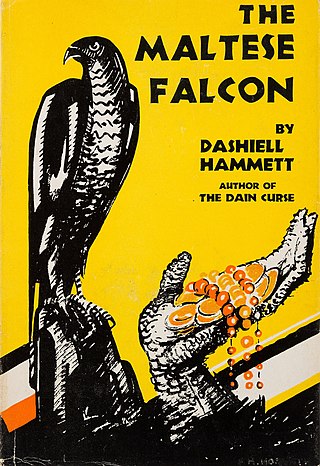
The Maltese Falcon is a 1930 detective novel by American writer Dashiell Hammett, originally serialized in the magazine Black Mask beginning with the September 1929 issue. The story is told entirely in external third-person narrative; there is no description whatsoever of any character's thoughts or feelings, only what they say and do, and how they look. The novel has been adapted several times for the cinema.
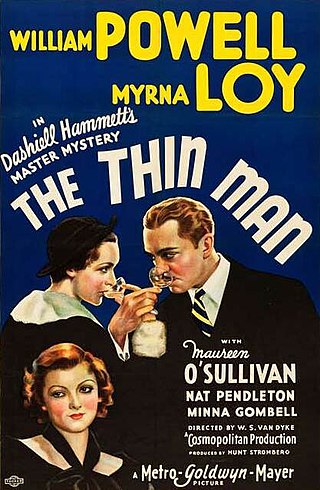
The Thin Man is a 1934 American pre-Code comedy-mystery film directed by W. S. Van Dyke and based on the 1934 novel by Dashiell Hammett. The film stars William Powell and Myrna Loy as Nick and Nora Charles, a leisure-class couple who enjoy copious drinking and flirtatious banter. Nick is a retired private detective who left his very successful career when he married Nora, a wealthy heiress accustomed to high society. Their wire-haired fox terrier Asta was played by canine actor Skippy. In 1997, the film was added to the United States National Film Registry having been deemed "culturally, historically, or aesthetically significant".

Dragnet is an American media franchise created by actor and producer Jack Webb, following Los Angeles Police Department (LAPD) Detective Joe Friday and his partners as they conduct by-the-book police work and solve crimes in Los Angeles. Originating as a radio drama on NBC in 1949, Dragnet has been adapted into several successful television shows and films, though the franchise's popularity has reduced since Webb's death in 1982. Its name is derived from the police term "dragnet", a system of coordinated measures for apprehending criminals or suspects.

Samuel Dashiell Hammett was an American writer of hard-boiled detective novels and short stories. He was also a screenwriter and political activist. Among the characters he created are Sam Spade, Nick and Nora Charles, The Continental Op and the comic strip character Secret Agent X-9.
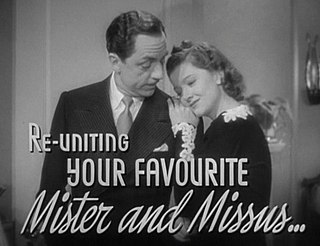
Nick and Nora Charles are fictional characters created by Dashiell Hammett in his novel The Thin Man. The characters were later adapted for film in a series of films between 1934 and 1947; for radio from 1941 to 1950; for television from 1957 through 1959; as a Broadway musical in 1991; and as a stage play in 2009.

Ellery Queen is a pseudonym created in 1928 by the American detective fiction writers Frederic Dannay (1905–1982) and Manfred Bennington Lee (1905–1971). It is also the name of their main fictional detective, a mystery writer in New York City who helps his police inspector father solve baffling murder cases. From 1929 to 1971, Dannay and Lee wrote around forty novels and short story collections in which Ellery Queen appears as a character.

Black Mask was a pulp magazine first published in April 1920 by the journalist H. L. Mencken and the drama critic George Jean Nathan. It is most well-known today for launching the hardboiled crime subgenre of mystery fiction, publishing now-classic works by Dashiell Hammett, Raymond Chandler, Erle Stanley Gardner, Cornell Woolrich, Paul Cain, Carroll John Daly, and others.
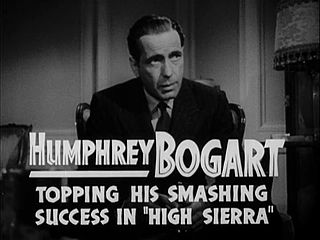
Sam Spade is a fictional character and the protagonist of Dashiell Hammett's 1930 novel The Maltese Falcon. Spade also appeared in four lesser-known short stories by Hammett.

William Conrad was an American actor, producer, and director whose entertainment career spanned five decades in radio, film, and television, peaking in popularity when he starred in the detective series Cannon.
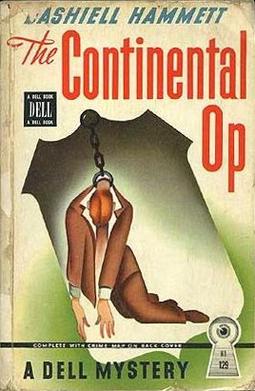
The Continental Op is a fictional character created by Dashiell Hammett. He is a private investigator employed as an operative of the Continental Detective Agency's San Francisco office. The stories are all told in the first person and his name is never given.

Sheldon Leonard Bershad was an American film and television actor, producer, director, and screenwriter.

The Glass Key is a novel by American writer Dashiell Hammett. First published as a serial in Black Mask magazine in 1930, it then was collected in 1931. It tells the story of a gambler and racketeer, Ned Beaumont, whose devotion to Paul Madvig, a crooked political boss, leads him to investigate the murder of a local senator's son as a potential gang war brews. Hammett dedicated the novel to his onetime lover Nell Martin.
Homicide was a landmark Australian television police procedural drama series broadcast on the Seven Network and produced by Crawford Productions. It was the television successor to Crawfords' radio series D24. The "Consummate Homicide cast" includes the four characters that are the best known: Det. Snr. Sgt. David "Mac" MacKay, Det. Sgt. Peter Barnes, Inspector Colin Fox and Sen. Det. Jim Patterson.
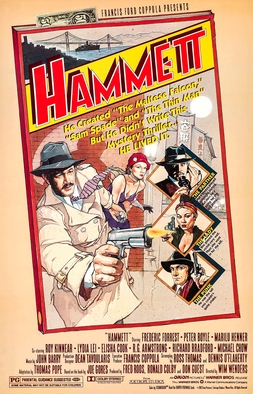
Hammett is a 1982 American neo-noir mystery film directed by Wim Wenders and executive produced by Francis Ford Coppola. The screenplay was written by Ross Thomas and Dennis O'Flaherty, based on the novel of the same name by Joe Gores. It stars Frederic Forrest as detective story writer Dashiell Hammett, who gets caught up in a mystery very much like one of his own stories. Marilu Henner plays Hammett's neighbor, Kit Conger, and Peter Boyle plays Jimmy Ryan, an old friend from Hammett's days as a Pinkerton agent. The film was entered into the 1982 Cannes Film Festival.
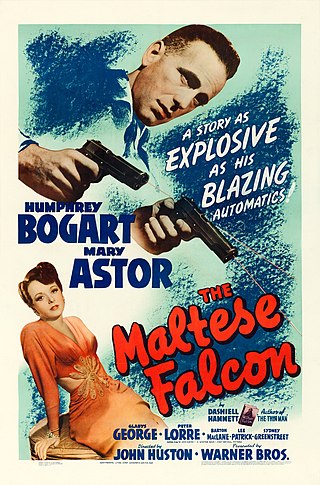
The Maltese Falcon is a 1941 American film noir in which a San Francisco private detective deals with three unscrupulous adventurers, all seeking a jewel-encrusted falcon statuette. Written and directed by John Huston in his directorial debut, the film was based on the 1930 novel The Maltese Falcon by Dashiell Hammett and is a remake of the 1931 film of the same name. It stars Humphrey Bogart as private investigator Sam Spade, Mary Astor as his femme fatale client, and as villains Peter Lorre and Sydney Greenstreet.
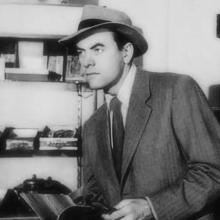
Harry Essex was an American screenwriter and director in feature films and television. Born and raised in New York City, his career spanned more than fifty years.

J. Scott Smart was an American radio, film and stage actor during the 1930s, 1940s and early 1950s.

The Fat Man is a 1951 American film noir crime film directed by William Castle. It is based on a radio drama of the same name, with J. Scott Smart reprising his role as Brad Runyan, a portly detective.

Casey, Crime Photographer is an American crime drama television series that aired from April 19, 1951, to June 5, 1952, on the CBS Television Network. The series ran for 57 episodes over two seasons. It was based on the successful radio series of the same name which was based on the novels by George Harmon Coxe.
Nick Danger is a fictional character created by the comedy group The Firesign Theatre, portrayed by Phil Austin. Danger is a parody of the hard-boiled detective, and is often announced as "Nick Danger, Third Eye", a parody of the term private eye. Danger stories involve stereotypical film noir situations, including mistaken identity, betrayal, and femmes fatales. Danger originally appears on the 1969 album How Can You Be in Two Places at Once When You're Not Anywhere at All, and is reprised in the 1979 Nick Danger: The Case of the Missing Shoe, 1984 The Three Faces of Al, and 2001 The Bride of Firesign.
He's based on the [Dashiell] Hammett Sam Spade character, but as I got more into writing him over the years, he's become much more like [Philip] Marlowe. I love [Raymond] Chandler's writing.
















